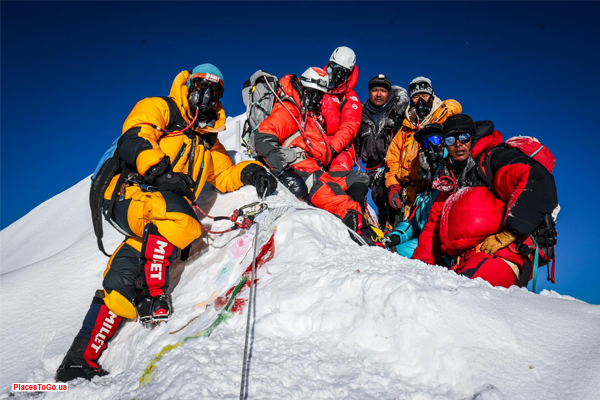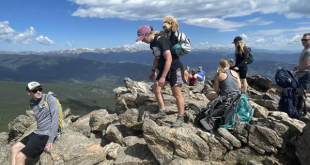Are you ready to take your first step into the exciting world of rock climbing? Whether you’re tackling indoor walls or venturing outdoors, the right preparation is everything. In this guide, I’ll walk you through smart safety tips and a gear checklist for beginner climbers to help you start strong, climb safely, and enjoy every moment on the wall.
Why Safety Should Be Your First Climbing Goal
When it comes to rock climbing, safety isn’t optional—it’s essential. Climbing may look thrilling (and it is!), but without the right habits and equipment, it can quickly become risky. As a beginner, building safe practices from the ground up will boost your confidence and reduce common accidents.
So, what’s the first rule of climbing? Always prepare before you climb.
Smart Safety Tips for Beginner Climbers
Let’s explore some of the essential climbing safety tips for beginners that can help you stay protected and climb with confidence.
Learn from a Certified Instructor
First, find a certified climbing instructor or join a reputable gym. Professional guidance ensures you’re learning proper techniques, safety protocols, and belaying basics right from the start.
Start Indoors Before Going Outdoors
Indoor climbing gyms offer controlled environments where you can practice without the added risk of outdoor elements. You’ll build muscle memory and technique before tackling real rock.
Understand Basic Climbing Terms
Climbing has its language—terms like belay, harness, carabiner, and top-rope. Learn them early. Clear communication is key to keeping you and your partner safe throughout every climb.
Double-Check Your Harness and Knots
Next, always inspect your gear and do a “partner check.” Look at the harness fit, knot security, and belay setup. This simple habit is one of the most important safety things in rock climbing.
Know Your Limits and Listen to Your Body
Finally, be honest about your skill level. Start small, climb at your pace, and take breaks. Overexertion is one of the top risks for new climbers.
Beginner Rock Climbing Gear Guide: What You Need
The right beginner rock climbing gear can boost your safety and confidence. Here’s a checklist to get you started:

H3: Personal Climbing Essentials
- Helmet – Protects your head from falling rocks or unexpected bumps
- Climbing Shoes – Designed for grip and precision
- Harness – Your core safety tool; comfort and fit matter
- Chalk & Chalk Bag – Helps keep your hands dry for a solid, slip-free grip
H3: Safety & Support Gear
- Carabiners – Use locking ones for key safety connections
- Belay Device – Assisted braking types are ideal for new climbers
- Climbing Rope – To lessen the power of a fall, select a dynamic rope that flexes somewhat.
- Crash Pad – A must for bouldering to cushion falls
H3: Clothing for Climbing
Wear breathable, stretch-friendly clothes that allow full mobility. For outdoor climbs, dress in layers and be prepared for changing weather conditions.
Climbing Etiquette and Outdoor Awareness
Even new climbers should learn the golden rules of climbing. Respect other climbers, communicate clearly, and leave no trace if you’re outdoors. Never start a route when someone is already on it, and always check your surroundings.
Bonus Climbing Preparation Tips
- Fuel your body with water and healthy snacks before and after your climb to stay energized and focused
- Warm up and stretch to prevent injuries
- Protect your hands by moisturizing, taping, or using climbing gloves
- Journal your progress—tracking technique helps reduce fear and improve mindset
FAQs: Climbing Safety and Gear for Beginners
- How can I be safe while climbing for the first time?
Start in a climbing gym with trained staff, wear proper gear, and double-check your harness and knots. - What gear should a beginner climber have?
Helmet, climbing shoes, harness, chalk bag, and access to a rope and belay device. Some gear can be rented at gyms. - How do I reduce fear while climbing?
Breathe deeply, start with easier routes, climb with a trusted partner, and focus on each move, not the height. - What is PPE in climbing?
PPE stands for Personal Protective Equipment—includes helmets, harnesses, and climbing shoes designed to protect climbers. - How do I protect my hands when climbing?
Use chalk and tape for cracks or sensitive skin, and apply balm after climbing. Avoid overtraining to prevent skin injuries.
Final Thoughts

Rock climbing is empowering, challenging, and deeply rewarding. But before you scale new heights, remember—smart safety and the right gear are your best climbing partners. As a beginner, every precaution you take today lays the foundation for confident and safe adventures tomorrow.
Are you prepared to challenge your climbing prowess? Explore our guide to the top U.S. mountain getaways perfect for beginner adventurers.





